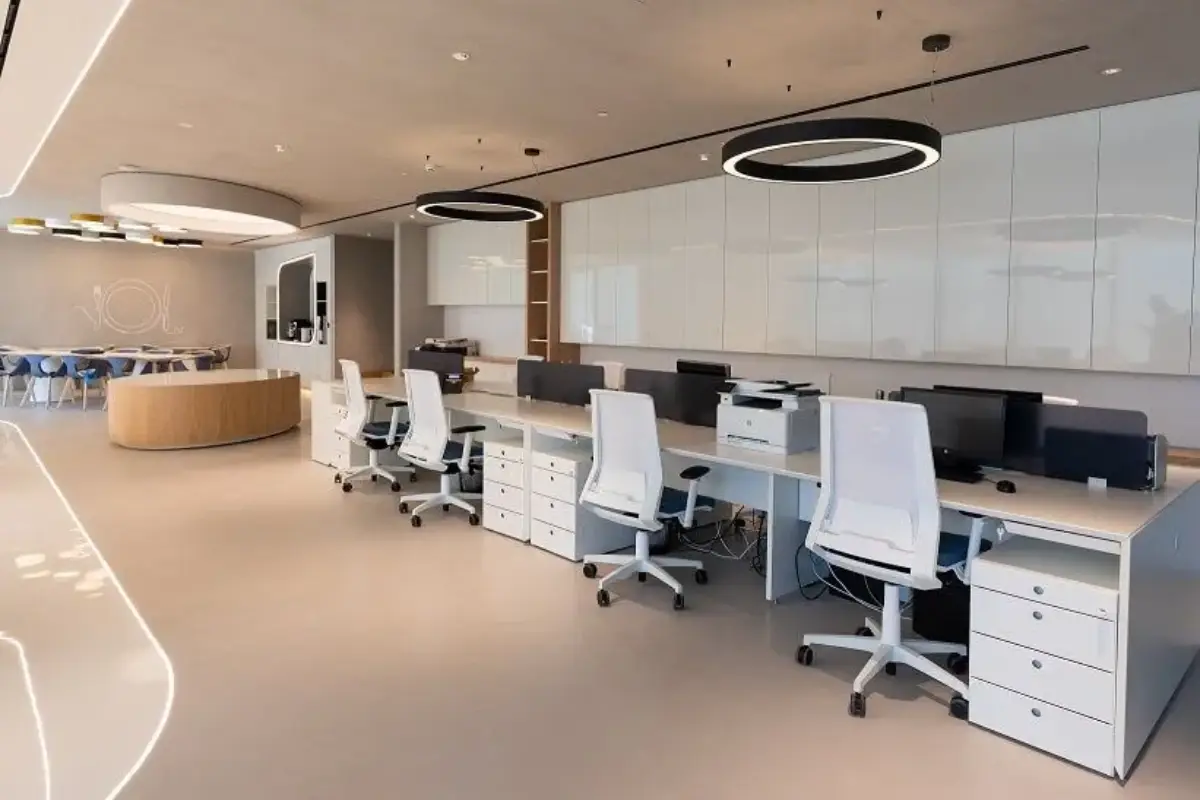Corporate interior design is more than just creating aesthetically pleasing office spaces; it’s about fostering productivity, enhancing employee well-being, and reflecting the company’s brand and culture. As businesses increasingly recognize the importance of a well-designed workspace, the demand for innovative corporate interior solutions continues to grow. In this blog post, we will explore the key elements of corporate interior design, its benefits, and how to create an inspiring and functional workplace that meets the needs of modern businesses.
The Importance of Corporate Interior Design
A well-designed corporate interior can have a significant impact on a company’s success. Here are some key reasons why investing in professional interior design for your office is essential:
-
Productivity and Efficiency:
- A thoughtfully designed workspace can boost employee productivity and efficiency. By creating a layout that facilitates workflow, reduces distractions, and provides ergonomic furniture, employees can perform their tasks more effectively.
-
Employee Well-being:
- The physical environment greatly influences employee well-being. Natural light, comfortable furniture, and a pleasant ambiance can reduce stress and increase job satisfaction, leading to better overall health and decreased absenteeism.
-
Brand Identity and Culture:
- The design of your office space should reflect your company’s brand and culture. This not only helps in creating a cohesive brand image but also reinforces company values among employees and visitors.
-
Client Impressions:
- First impressions matter. A well-designed office space can leave a lasting positive impression on clients and business partners, enhancing your company’s reputation and fostering trust.

Key Elements of Corporate Interior Design
Creating an effective corporate interior design involves various elements that need to be carefully considered and integrated. Here are some key components to focus on:
-
Space Planning:
- Effective space planning is the foundation of good interior design. It involves understanding the workflow, departmental interactions, and the number of employees to create a layout that maximizes space utilization and supports the company’s operations.
-
Ergonomics:
- Ergonomics plays a crucial role in corporate interior design. Providing ergonomic furniture, such as adjustable chairs and desks, can prevent workplace injuries and enhance employee comfort and productivity.
-
Lighting:
- Lighting significantly impacts the mood and productivity of employees. Incorporating natural light where possible, and using artificial lighting that mimics natural light, can create a vibrant and energetic workspace.
-
Color Schemes:
- Colors can influence emotions and behaviors. For instance, blue and green hues are known to have calming effects, while bright colors like yellow and orange can stimulate creativity and energy. Choosing the right color scheme can positively impact employee mood and performance.
-
Flexible Workspaces:
- Modern offices often require flexible workspaces that can adapt to different tasks and work styles. Incorporating areas for collaborative work, quiet zones for focused tasks, and versatile furniture can accommodate the diverse needs of employees.
-
Technology Integration:
- Integrating technology seamlessly into the office design is essential for modern businesses. This includes providing adequate power outlets, incorporating smart office solutions, and ensuring robust internet connectivity throughout the workspace.
-
Sustainability:
- Sustainable design is becoming increasingly important in corporate interiors. Using eco-friendly materials, energy-efficient lighting, and incorporating greenery can create a healthier and more sustainable work environment.
Benefits of Professional Corporate Interior Design
Hiring a professional interior designer for your corporate space can offer numerous benefits:
-
Expertise and Experience:
- Professional interior designers bring expertise and experience to the table. They understand the latest trends, materials, and technologies, ensuring that your office is both modern and functional.
-
Customized Solutions:
- Interior designers provide tailored solutions that meet your specific needs and preferences. They take into account your company’s brand, culture, and operational requirements to create a unique and effective design.
-
Project Management:
- Managing an office renovation or redesign project can be complex and time-consuming. Professional designers handle all aspects of the project, from planning and sourcing materials to coordinating with contractors, ensuring a smooth and efficient process.
-
Cost-Effective:
- While hiring a professional designer involves an upfront cost, it can save you money in the long run. Designers can help you avoid costly mistakes, optimize space usage, and choose durable materials that reduce maintenance costs.
-
Increased Property Value:
- A well-designed office space can increase the value of your property. This is particularly beneficial if you own the office space and plan to sell or lease it in the future.
Once the brief is defined and we’ve signed all the boring papers, Our people will draw sketches, prepare moodboards, source furniture & materials and many other things. The project doesn’t proceed till you’ve agreed on everything
Tips for Creating an Effective Corporate Interior Design
If you’re planning to redesign your office space, here are some tips to help you create an effective corporate interior:
- Understand Your Needs:
- Assess your company’s needs, workflow, and the preferences of your employees to create a design that supports your operations and culture.
- Prioritize Employee Well-being:
- Focus on elements that enhance employee well-being, such as ergonomic furniture, natural light, and a comfortable environment.
- Incorporate Flexibility:
- Design flexible spaces that can adapt to different tasks and work styles, providing both collaborative and quiet zones.
- Reflect Your Brand:
- Ensure the design reflects your company’s brand and culture, creating a cohesive and professional image.
- Hire a Professional:
- Consider hiring a professional interior designer to guide you through the process and provide expert solutions

